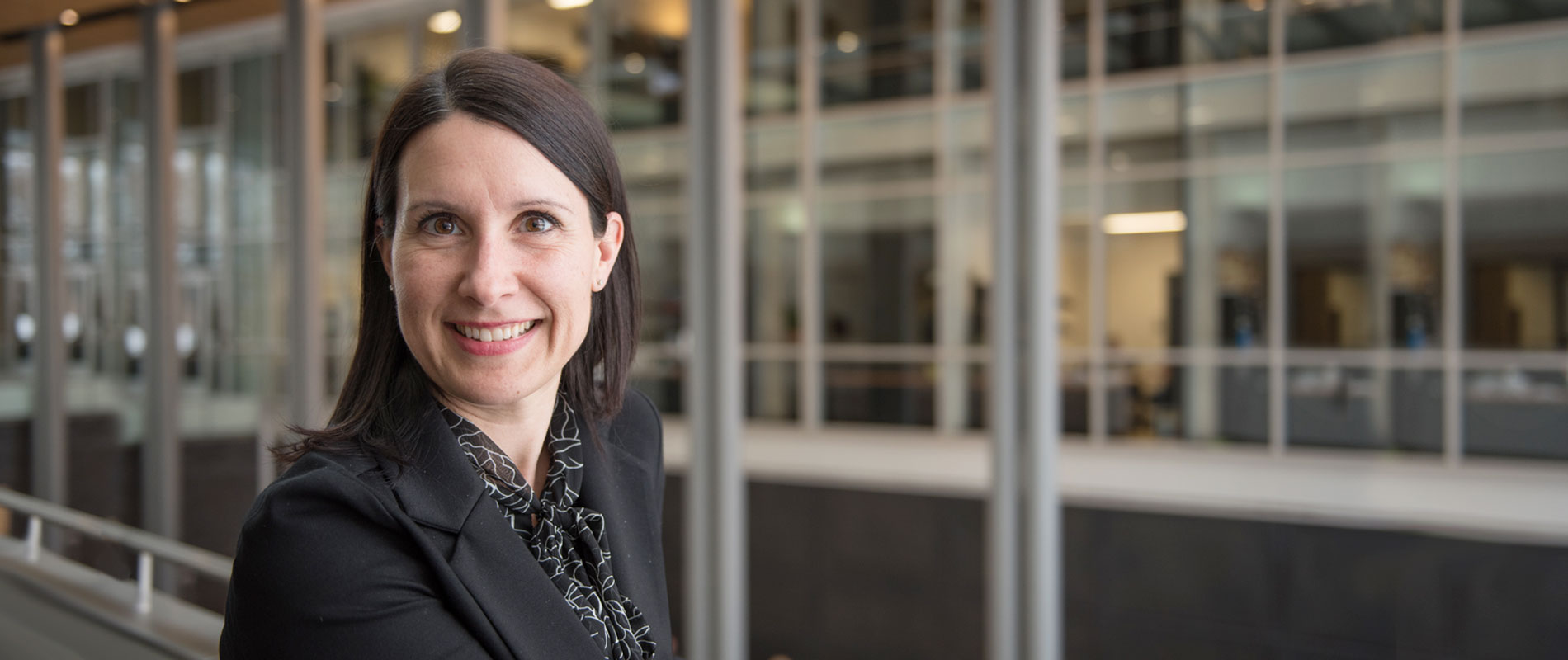Portrait of a researcher

Using stem cells to conquer leukemia
Julie Lessard
FACULTY OF MEDICINE
Professor in the Department of Pathology and Cellular Biology
Principal Investigator, Chromatin Structure and Stem Cell Biology research unit, IRIC
Holder of the Canada Research Chair in Molecular Genetics of Stem Cell Hematopoiesis
Broadly speaking, Julie Lessard is trying to understand the mechanisms of cancer. But more specifically, her research focuses on blood stem cells. In her laboratory at the Institute for Research in Immunology and Cancer (IRIC), she has identified a gene – a “therapeutic target” – called BRG1. “We’ve been able to show that this gene is essential for the proliferation of leukemic cells and that the leukemia disappears when it is removed. The interesting thing about BRG1 is that is seems to be specific to cancer, meaning that it plays no role for normal blood stem cells. That is very promising, since it would let us target only cancerous cells, while leaving healthy cells alone.”
Lessard arrived at the IRIC in 2007 after doing postdoctoral work at Stanford University; she was attracted by the Institute’s very innovative concept. “We have the opportunity to partner with pharmaceutical companies, but also have all the technology and infrastructure we need right here at the Institute: chemical compound libraries, robots, animal quarters, experts in medicinal chemistry and in intellectual property. What’s more, the royalties collected can be ploughed back into the sort of high-risk, high-impact studies for which it is extremely difficult to obtain funding in the earliest stages of development.”
Do blood stem cells continue to surprise you?
Absolutely! We’ve known about them since the 1960s, we’re well equipped to study them and there is very robust data available on them. But the fact remains that there few of them in bone marrow and umbilical-cord blood. In addition, they are often dormant and are activated only when they are needed, by mechanisms that we still don’t completely understand.
How long does it take between a discovery and the clinical application of a drug?
You often hear 10 years of research and development. There are so many steps to go through! You have to identify molecules that can inhibit the therapeutic target, work with chemists to develop these molecules, test them with in vitro cellular models before pre-clinical trials and eventually (you hope!), clinical trials.
What motivates you?
It’s the chance to answer questions that we have been asking for so long, and to advance knowledge. We always try not to lose sight of the context of our work, to keep in mind that the ultimate goal is to benefit people’s health. I have to say that I am also motivated by training the young researchers who work with us. It’s very gratifying to watch them evolve and accumulate all this knowledge.